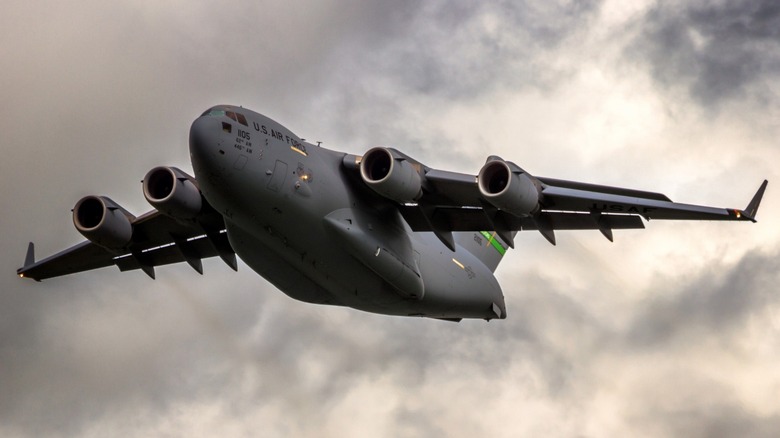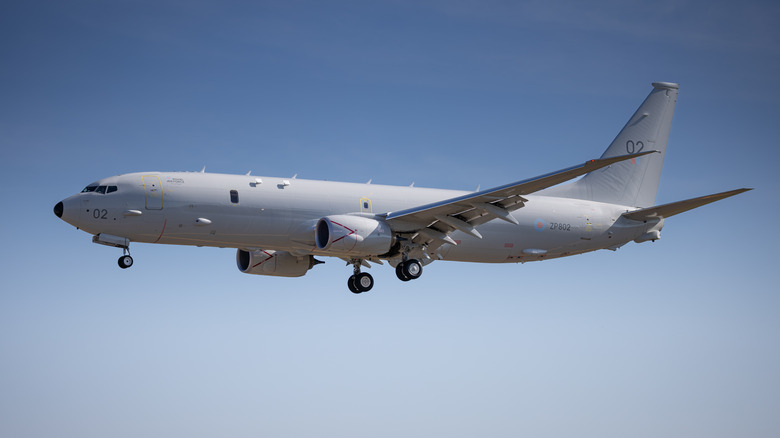Why Do Military Cargo Planes Have Those Wings On The Top?
You'll notice that some of the world's most powerful military transport planes, such as the Boeing C-17 Globemaster (pictured), have their wings way up top, above the fuselage. This is different from a typical passenger jet, where if you look out the window, you'll see that the wings are below you. The reason for this is something called "high-wing configuration" that most military jets come with. The purpose is to get the fuselage as close to the ground as possible and make it easier to accommodate massive rear cargo doors that double as ramps.
This means large objects and vehicles can simply be rolled or driven on and off, which is far easier and faster than the complex lifting equipment it takes to do the same with civilian cargo planes. The design also frees up the entire interior length of the fuselage for cargo, as the massive wing box doesn't have to cut through the main hold. Another advantage that placing the wings on top provides is that it lifts the engines and wings far above the ground, which significantly reduces the risk of damage from debris being sucked into the engines.
This is crucial for such planes, since they are often required to operate from airstrips that aren't exactly pristine. The added ground clearance also benefits aircraft taking off from short runways, as it allows the use of large-diameter propellers that offer better initial acceleration than jet engines. Some of these aircraft even feature an adjustable landing gear system that allows the entire aircraft to "kneel." This function uses hydraulics to lower the fuselage and bring the cargo floor much closer to the level of the ground.
Low-wing military aircraft exist, too
Of course, not every military plane sports a high-wing design. The choice of wing placement is entirely dependent on the aircraft's intended purpose. For instance, a low-wing configuration makes more sense when the mission doesn't revolve around airlifting bulky, roll-on cargo. These aircraft are typically military versions of existing commercial airliners. A prime example is the U.S. Navy's specialized P-8A Poseidon maritime patrol aircraft (pictured), which is derived from the Boeing 737-800, or the KC-46 Pegasus tanker, which is based on the civilian Boeing 767.
These planes leverage the proven, efficient low-wing designs of their airliner cousins. So, if high-wing designs are that useful, why don't we see them on all planes, including the ones we fly on? As it turns out, low-wing setups offer their own set of advantages. They are generally more aerodynamic and create less drag, which translates to better fuel efficiency and range. And since the engines are slung under the wings, they are much easier for ground crews to access for maintenance and inspections.
The config also allows the landing gear to be conveniently housed within the wing and wing box structure, which simplifies the overall design. Passenger safety is another consideration. In the event of a wheels-up landing, the low-mounted wings and engines can double up as crumple zones and save the fuselage. Lastly, these aircraft primarily operate from airports where runways are kept in tip-top condition. This means the risk of foreign object damage to the engines is very low, and they don't need to be positioned so high up.

